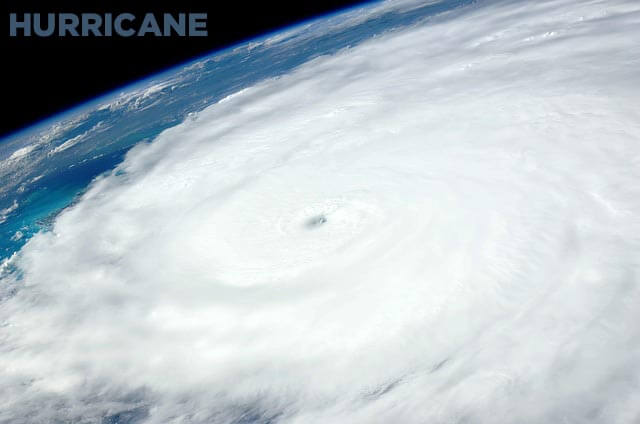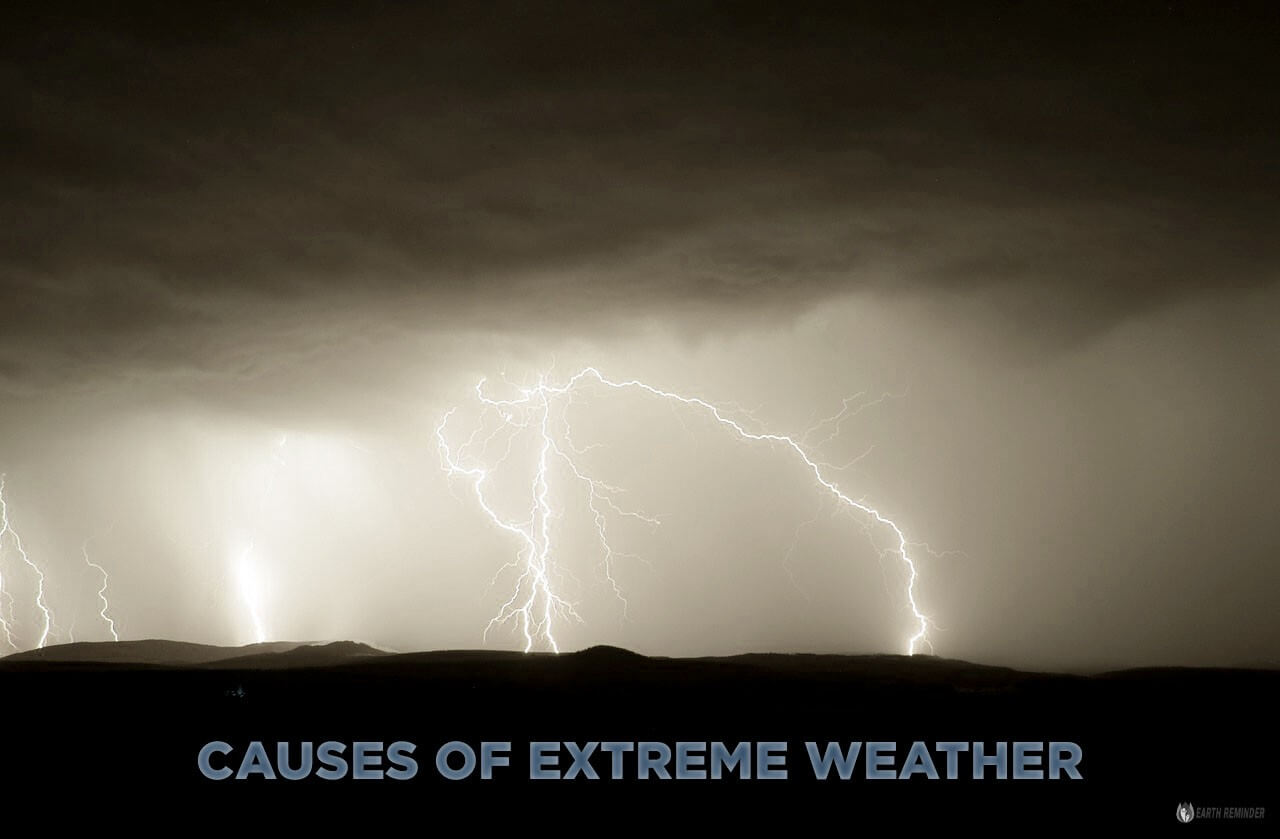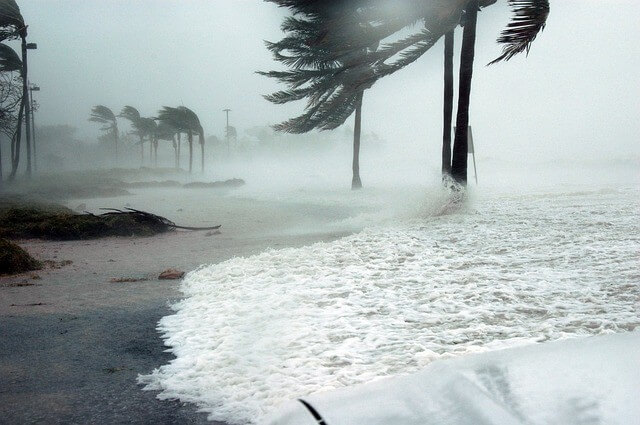Causes of Extreme Weather
What is Extreme Weather?
When the weather conditions show significant differences than the usual weather, this is termed as extreme weather or severe weather. The extreme weather conditions may last for a while or sometimes it may take just one or two days to become normal. For example- heatwaves, hurricanes, flash floods, etc.
As we know that the world’s weather has been warmed to quite huge degrees from the past few decades. This warmed weather is playing a significant role as one of the major causes of extreme weather events across the world. Heatwaves and droughts are quite common extreme weather events that most people experience due to change in climatic conditions. Most of the causes of climate change are human-induced that has increased the strength of some of the extreme weather events.
If we take some examples of the severe weather event. Some of them are as follows –
- In the UK, December 2010 was recorded as the coldest December for 100 years. During December 2010 the temperature was recorded below 0°C due to cold arctic air and snow brought from North East. As a result, the schools, roads, airports, etc. were closed.
- During 2004-2006, the UK had received below-average rainfall. Due to which the reservoirs and groundwater supplies did not recharge enough to fulfill the proper need for water supply.
- In Europe, in summer 2003 it was extreme heat waves that increase the temperature up to 38.5°C, etc.
There are a lot many incidents caused due to extreme weather. Most of these incidents are caused by man-made causes directly or indirectly. Let’s discuss the causes of extreme weather events to know the extreme weather little more in detail.
What are the major causes of extreme weather?

-
Extreme Temperature
Extreme temperature is one of the major causes of severe weather. The temperature of the Earth is rising every year. Increasing temperature and extreme sunshine on top of it creates a low-pressure system. Due to which the hurricanes and other tropical storms get its way to start.
-
High atmospheric winds
Have you heard about the term “Jet Stream”? Well, the jet stream plays an important role in the weather pattern worldwide. It also contributes to meteorologists forecast weather on the basis of their position.
The jet stream is found where the cold air from Earth’s poles meets with warm tropical air. These winds help to continue and control the weather system from west to east in the northern hemisphere and from east to west in the southern hemisphere. Sometimes these winds bring unpleasant weather with them which may lead to the formation of a tornado.
-
Where pressure systems meet
When too cold high-pressure systems meet with too warm low-pressure systems, the chances of extremely high waves on sea surface increases. The too cold high-pressure systems originate from sub-polar land whereas too warm low-pressure systems originate from temperate seas.
The intensity of the winds depends on the pressure differential and closeness of the two pressure systems. If the pressure differential is extremely high and the two pressure systems are very close then the wind formed will be extremely greater. These greater winds create high-intensity storms causing cyclones.
-
Sharp changes in the altitudes
You must have studied that when air goes higher, it gets colder. A very good example can be seen in the North American West Coast. If you visit Vancouver, Seattle, Portland or Los Angeles, you will find pleasant lovely weather over there as the warm pacific air makes it a beautiful visiting place. When this air reaches up on mountains, you will find there ten feet heavy snow.
This is how the steep altitude changes create a difference in the weather conditions. This is a pretty good example to understand the change of weather with a sharp change in the altitudes i.e. how the air changes the weather from low altitude to higher altitude.
-
Improper weather systems
The weather systems keep on moving in a proper way which helps to maintain the weather conditions in a smoother way. When the weather conditions come across any disturbance in between it creates disasters. A very good example was seen in 1998 when cold arctic air came in contact with warm air from the Southern United States. The meeting of the cold and warm wind caused an ice storm.
Generally this kind of weather condition lasts for a few hours but unfortunately this time it was a huge extreme weather event. It took almost three days to calm down to normal weather conditions. Due to the high-frequency ice storm, most of the electric lines were collapsed that took a bit longer period to get normal.
-
Climate change contributes to extreme weather
There is no doubt that the world’s climate has been changed on higher notes. The world temperature has increased quite high from the past few decades and even keeps on changing year after year. One of the big reasons for the increase in Earth’s temperature is the level of CO2. As the CO2 is increasing in the atmosphere, the temperature of the Earth is also increasing simultaneously.
Just go back to history for a while then you will find some of the severe weather events have become quite frequent. For example – Since the 1970s, the high-intensity Atlantic hurricanes are increasing in numbers. Since 1950, heatwaves and droughts have become quite common extreme weather events.
The level of greenhouse gases is increasing in the atmosphere day by day that traps heat in the air causing a rise in the temperature. The relatively warm atmosphere absorbs more water vapor which may lead to flood or drought in some areas.
All these events have made a perception in people’s minds that climate change is also a big reason for extreme weather events to occur. However, according to climatologists, it is very hard to make out the exact role of climate change is causing extreme weather events.
-
Global warming also influence extreme weather events
As the world temperature is increasing due to global warming simultaneously the effects of it are also increasing. Global warming is contributing to intensifying heatwaves. Warm air also influences evaporation which may also worsen the conditions of drought. Extreme drought conditions lead to dry field and forest that increases the chances of a forest fire.
Global warming also boosts the amount of water vapor in the atmosphere which may lead to causes of severe weather like heavy rainfall, heavy snowstorm, etc. Extreme warm and moist atmosphere over sea surface may also cause intense hurricanes.
There are other many causes of extreme weather events. Some of these causes are influenced by natural reasons, whereas some others are human-induced like global warming and climate change. All these causes are changing the pattern of weather conditions to extremity across the globe.
If we can take some necessary steps to deal with global warming and climate change, we will be helping to control severe weather in an indirect way. For this, we all need to understand our responsibilities towards our planet to save mother Earth.

